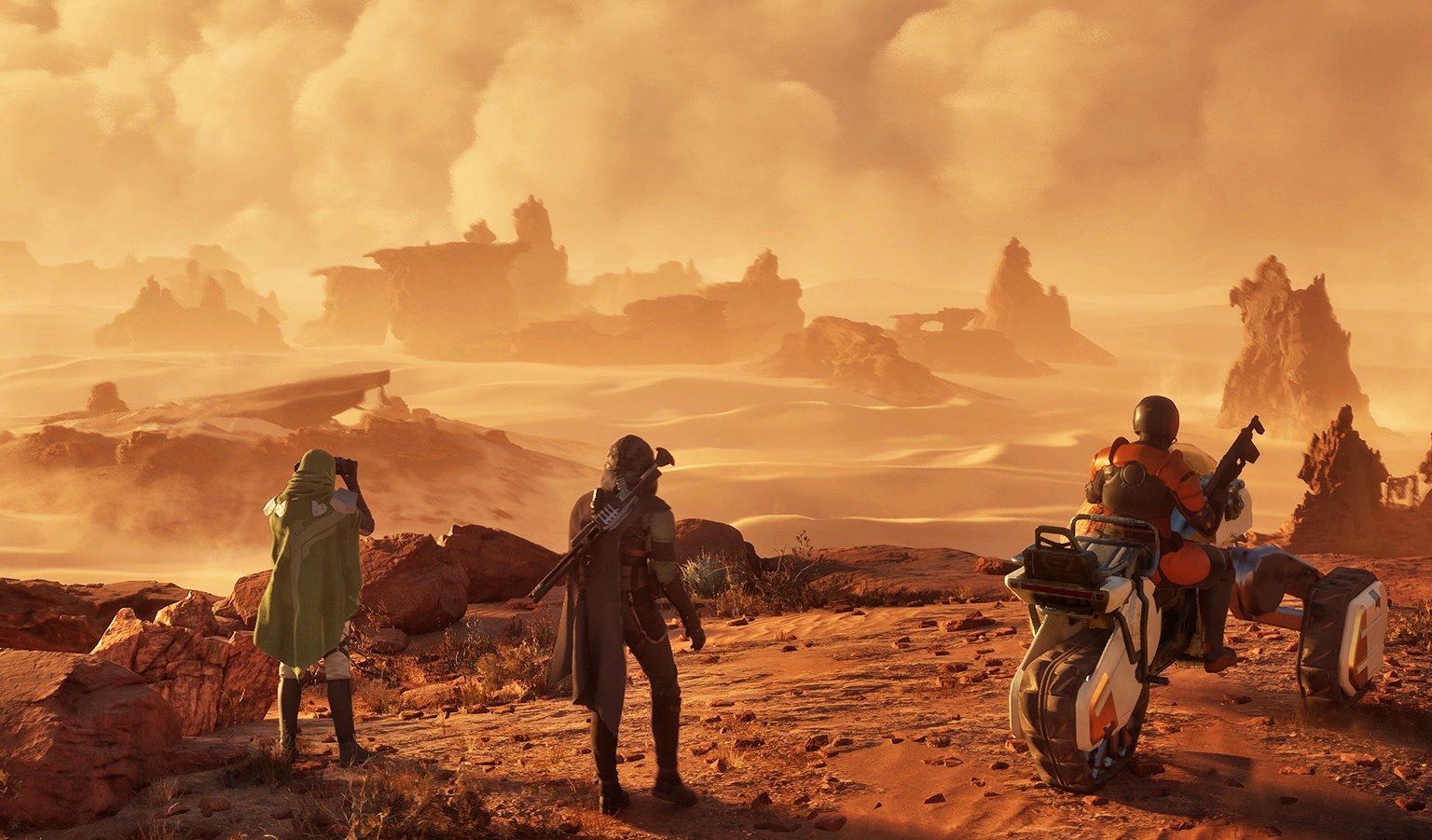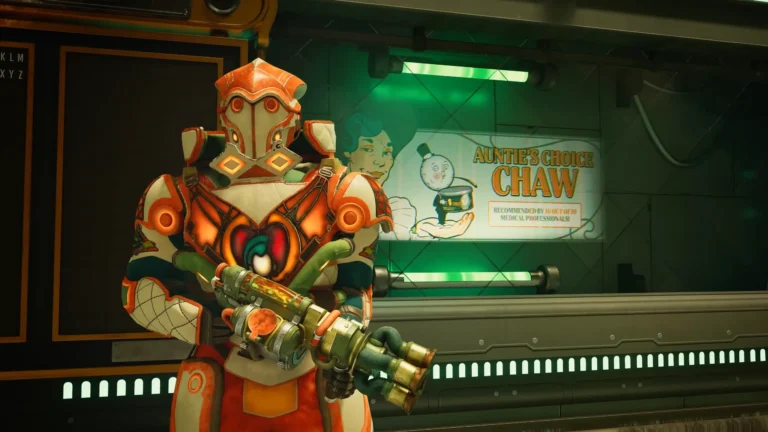Planning to head into the Deep Desert in Dune: Awakening? This endgame zone plays by its own rules. PvP is always active, storms reset the map every week, and the best loot in the game is locked behind serious danger.
Here is what you need to know before you build, farm, or explore beyond the Shield Wall.
Full PvP and Shield Mechanics
In the Deep Desert, PvP is always on. You can be attacked by other players at any time, and under the right conditions, they can even raid your base.
But your base is not totally defenseless. A shield system protects it by default, as long as it stays powered. That shield can drop in three cases:
- You run out of fuel.
- A regular sandstorm rolls through (brief shield drop window).
- A Coriolis Storm is building (longer warning, more dangerous).
Once a Coriolis Storm fully arrives, all bases in the Deep Desert are completely destroyed, and any players caught in it are killed.
Weekly Wipes, No Imperial Taxes
One unique aspect is that the Emperor does not tax Deep Desert bases, but that freedom comes with the cost of total impermanence. Every week, the Coriolis Storm wipes the entire map. That includes all player bases and resource nodes.
So if you want to build out there, make sure to:
- Move your gear and resources before the storm hits
- Use blueprints to save your layout and rebuild fast.
- Accept that it is all temporary; Stay mobile and ready to adapt every week
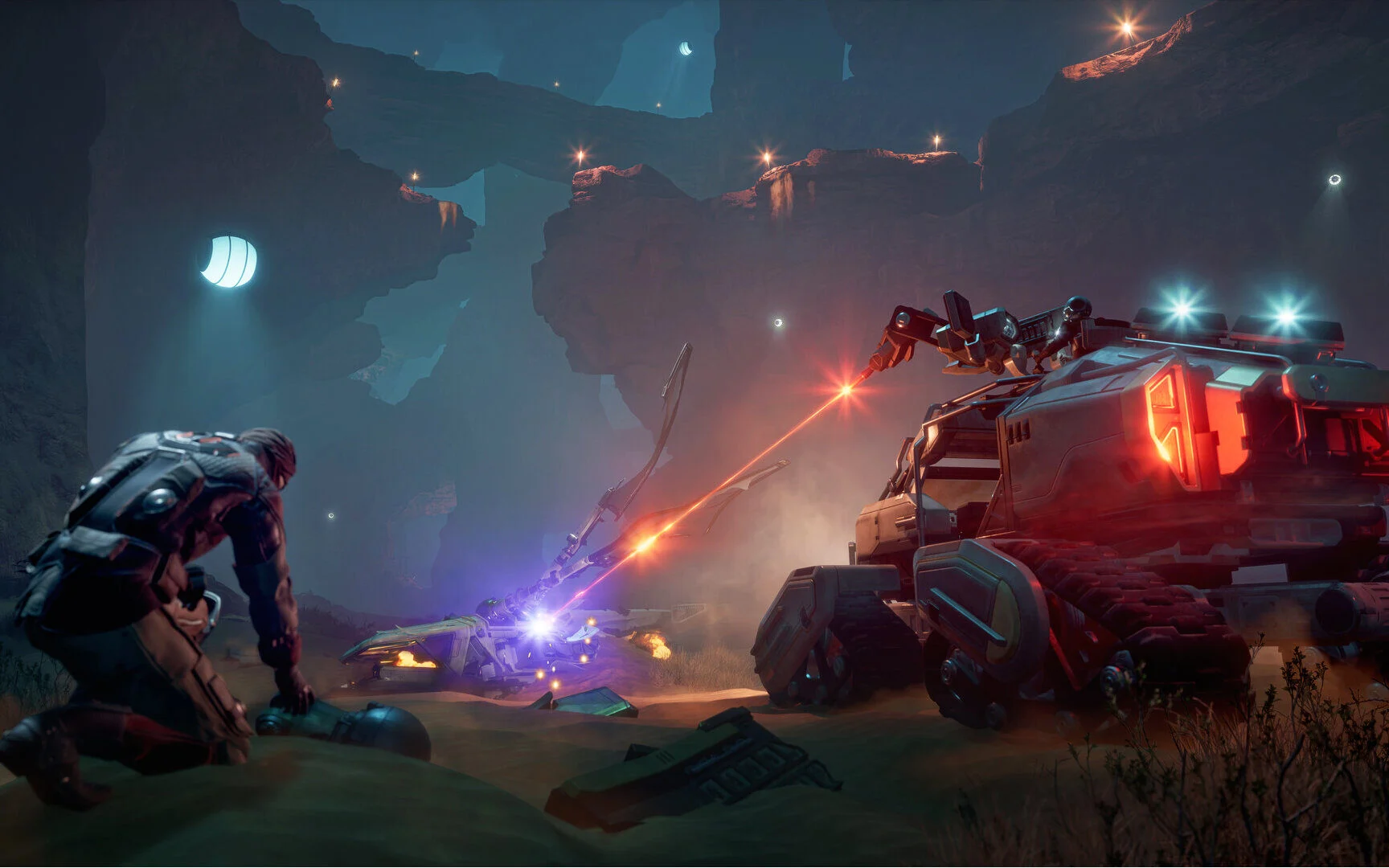
It is a high-risk playstyle, but for players chasing spice, freedom, or PvP dominance, it will feel quite rewarding.
Resource and Loot Rules
If you want the best materials in the game, the Deep Desert is where you go.
- Tier 7 materials only drop here. These are needed for top-tier crafting.
- Loot respawns slowly. The area is competitive and time-sensitive.
- Some items are world-unique. They might only appear once per week, and never again.
That makes Deep Desert loot some of the rarest and most valuable items in the game!
Cheaper Building, But You Pay in Other Ways
Constructing a base in the Deep Desert costs less than in the Hagga Basin. But the tradeoff is pretty clear: it will not last. You are expected to rebuild, relocate, and adapt every single week.
- Power management is key. Run out, and your base goes offline.
- Blueprints save time. Always have your layout backed up.
Base raiding is possible, but not a core system. Raiders must locate and disable your power supply first.
PvE Exists Out Here Too
Not into PvP? There is still a large PvE-only zone inside the Deep Desert, located behind the Shield Wall. It spans about 24km and features:
- Shipwrecks
- Imperial Testing Stations
- Ecolabs and exploration targets
It is still dangerous but far more controlled, and worth checking out even for solo or PvE-focused players.
The Sandworms Are Bigger
The Deep Desert is home to up to fifty massive ring-mouth sandworms, as depicted in the Dune films. These colossal creatures can consume vehicles whole, which makes traversal extremely dangerous. Getting caught in the open when one of these shows up is a guaranteed trip back to spawn.
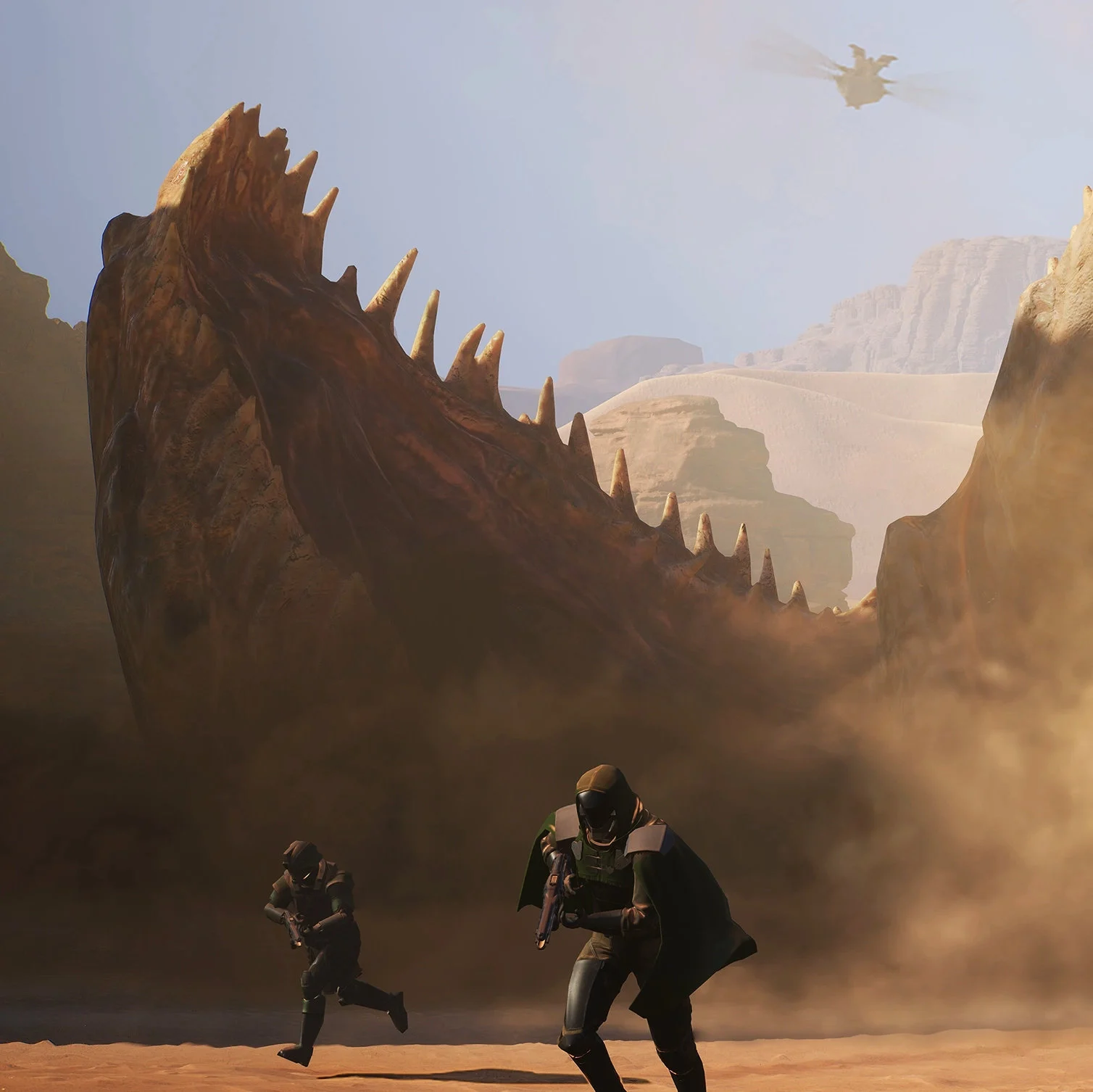
The Map System and Player Cartographers
Every week, the Deep Desert changes. The layout is handcrafted but rotates, which means navigation is an ongoing challenge.
Players can make and sell their own maps:
- Basic maps reveal fog of war.
- Advanced maps mark high-value nodes, found using a scanner.
These can be sold or traded, and skilled mapmakers could become trusted community names.
Deep Desert Is Not for Solo Play
You can try to solo out here, but it will be rough.
- Late-game content like spice harvesting and PvP zones are team-focused.
- Even PvE encounters are risky without support.
However, skilled solo players who know how to prep and move fast might still carve out a spot, just do not expect it to be easy!
Technical Layout and Server Caps
The Deep Desert is structured as a 9×9 tile layout (81 tiles total), divided into nine 3×3 clusters. Each cluster operates on its own server, supporting up to 100 players, allowing for a total capacity of 500 to 900 players across the entire Deep Desert.
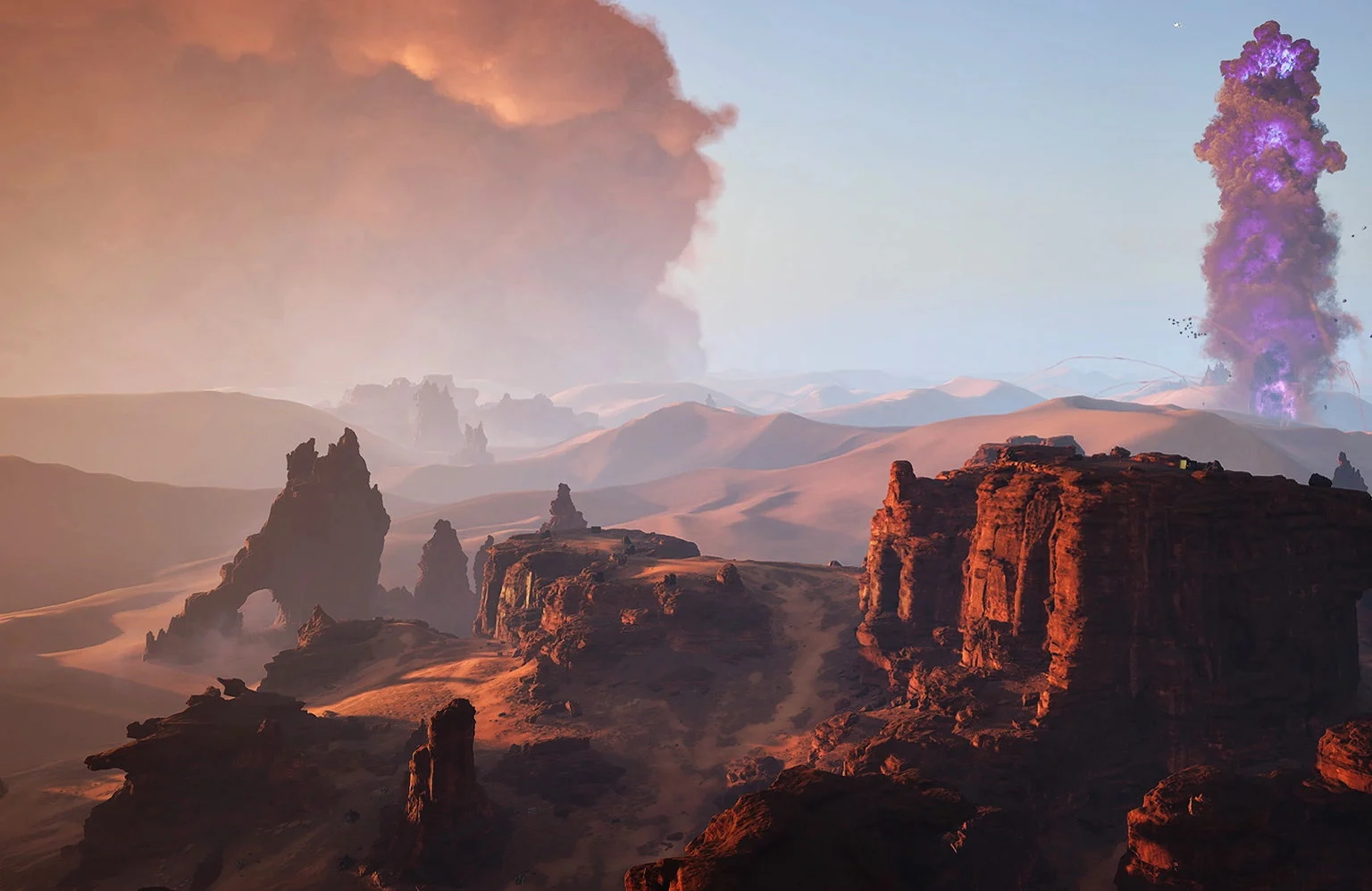
This setup helps to make sure that the area stays playable even during peak times and that exits are always reachable.
The Deep Desert is a dangerous place, but it is also one of the most exciting systems of Dune: Awakening’s current endgame. If you want more Dune content and survival tips, head to our news hub.
